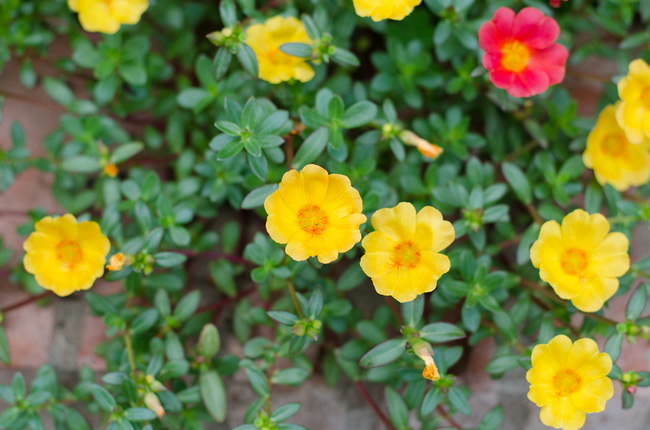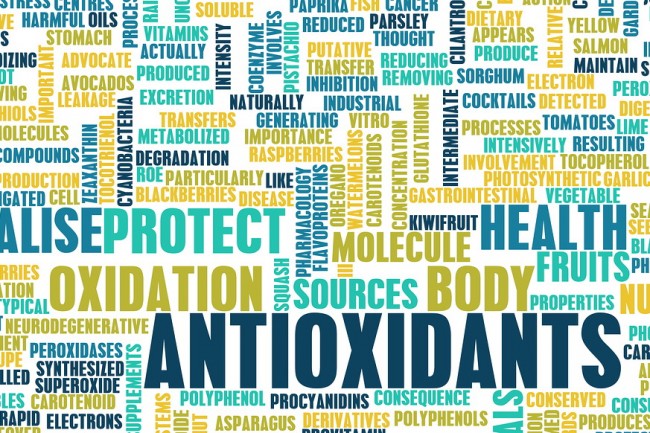- Make It Yourself Lavender Heart-Shaped Bath Bombs!
- 20 Things You Never Knew About “Down There”
- 12 Best Foods For Those Suffering From Arthritis Pain
- 12 Personal Hygiene Mistakes Almost Everyone Makes (Mom Never Told You About #4!)
- 15 Medicinal Plants And Herbs From The Cherokee People
- 12 Mind-Blowing Benefits Of Drinking Coconut Water During Pregnancy
- 12 Outstanding Winter Foods That Won’t Fatten You Up Like A Christmas Turkey
The Amazing, Edible Weed That Is Packed With Nutrition

Photo credit: bigstock.com
More than likely, you have some purslane in your yard, growing through the cracks in the sidewalk, or growing on the edges of the parking lot where you work, and you don’t even know what it is.
In America, purslane is thought of as an annoying weed, but those in the know recognize this weed for what it really is — a super nutritious source of food!
In today’s uncertain world, it’s always good to know at least a few edible plants that you can rely on, should you ever find yourself in a food shortage due to an emergency.
Purslane, scientifically called, is called by numerous names, depending on which part of the globe it is found, including: Pigweed, fat weed, little hog weed, and pusley. In Malawi, this round leafed weed is called “the butt cheeks of the Chief’s wife.” No comment on that one!
Purslane used to be quite common and was often used in salads, as a side dish, or sometimes eaten as it is: Raw, pulled right out of the ground. This weed is about 93 percent water and has a slightly peppery taste that reminds many of watercress or spinach.
Although this plant fell out of favor sometime around the 1930’s, it is making a comeback in many areas and is now often found in farmer’s markets.
Want to know more? Keep reading and find out everything there is to know about this common weed that you can eat, depend on in an emergency, and perhaps even sell to those who aren’t as savvy as you are!
1. The Nutrition!
Purslane contains so much nutrition, it’s hard to believe that anyone could ever consider this a weed! Purslane has (in a 3.5 ounce portion) 35 percent of your requirement for vitamin C, 26 percent of your need for vitamin A, 17 percent of your requirement for magnesium (something that is hard for most people to come by), 15 percent of your manganese requirement, and 14 percent of your requirement for potassium. It also has smaller amounts of iron (11 percent) and calcium (7 percent) as well as minute amounts of B1, B2, B3, phosphorous, copper, and folates. All of this nutrition for a tiny 16 calories!
Continue to Page 2

Photo credit: bigstock.com
2. The Antioxidants!
Purslane is also high in numerous antioxidants that can stop disease dead in its tracks, such as vitamin C, vitamin E, vitamin A, glutathione, which is a potent antioxidant often referred to as the “master” antioxidant, melatonin, betalain, and more! These antioxidants are much more powerful than we can even imagine. One study involved obese teenagers who consumed the seeds of purslane and greatly reduced their LDL (bad) cholesterol levels as well as their triglyceride levels.
3. The Minerals!
Many Americans are lacking in several important minerals. The good news is that purslane can give you all of these minerals and more in just one or two servings! Purslane is a fantastic source of magnesium. Magnesium is vital for protecting the body from heart disease, diabetes, and is involved in at least 300 different reactions in the body. Purslane also has potassium, which helps to regulate blood pressure. It also has calcium, phosphorus and iron, all of which are important for the body. More mature plants have more of these minerals than younger plants but are tougher and stringier than their younger counterparts.
4. The Omega-3’s!
Omega-3 fatty acids are referred to as essential fatty acids because our bodies, although they need them, do not make them. We must get them from our foods. Purslane is low in fat but the fat it does contain is high in omega-3 fatty acids! Compared to other green foods, this is a tremendously high amount. This is also good news for vegans who have a hard time finding foods rich in omega-3 fatty acids.
Continue to Page 3

Photo credit: bigstock.com
5. It is Easy to Grow!
If you live in an area where purslane is scarce or appears to be non-existent, perhaps the case is that someone already harvested it! The good news is that purslane is super easy to grow. It loves rocky soil, sandy soil, salty soil, you name it! Even if you live in an apartment, you can grow purslane in a few pots, simply cut off what you want, and it will quickly grow right back again. It does tend to spread pretty quickly, however, so you should be careful not to let it take over your yard or your garden but once you try this tasty little plant, you will definitely make room for it in your garden somewhere!
There does appear to be one drawback to this plant — it does contain oxalates. Oxalates are bad news for those who tend to get kidney stones as oxalates are part of what makes up kidney stones. If you have had kidney stones, you might want to skip this plant.
Oxalates also have what might be called anti-nutrient compounds because they can interfere with the absorption of the minerals it contains, such as calcium and magnesium.
You can limit the amount of oxalates, however, by growing or collecting purslane that is grown in full sun. For some reason, this greatly diminishes the amount of oxalates. You can also consume yogurt with your meal that contains purslane as yogurt also reduces oxalates in all foods.
You can use purslane in almost any recipe that calls for lettuce or spinach. In fact, Martha Washington, the wife of first president George Washington, once had a recipe in her handwritten recipe book for pickled “purslane” , so this plant not only has been around for quite some time, but it can be used in almost every dish you can imagine.
Some chefs have stated that purslane should be eaten raw, lightly steamed, or cooked until it is falling apart, otherwise, it tends to have a slimy texture some people find unpleasant.
READ ALSO: Common Sense Nutrition Facts That Aren’t Common
Why not give this nutritionally rich plant a try? You have nothing to lose and you might just find one of your favorite new foods is growing in your supermarket parking lot!
References:
































